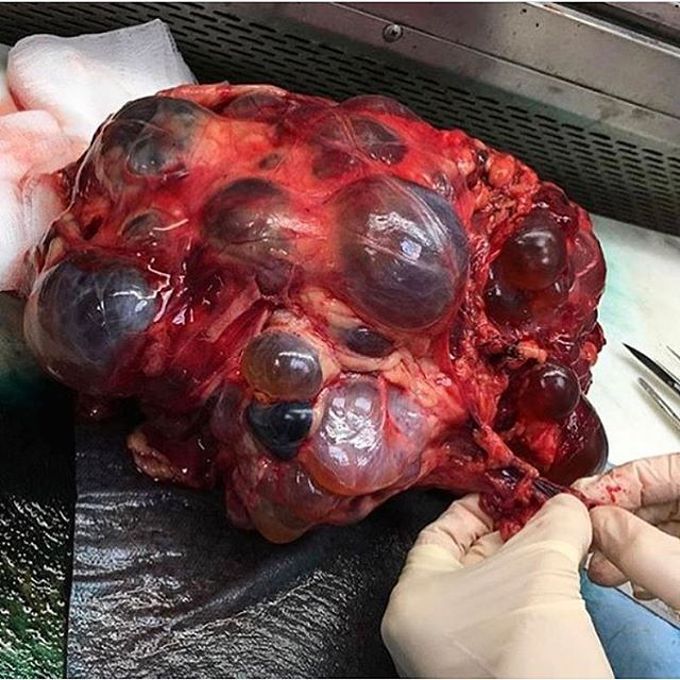


Nephrectomy (kidney removal) done for a polycystic kidney that weighted 4.5kg!
Notice the numerous cysts grown in the kidney. Polycystic kidney disease is hereditary and bilateral. The autosomal recessive form has numerous small cysts that arise only from the collecting ducts and result in bilateral symmetrical enlargement of the kidneys. In the autosomal dominant type, cysts arise from all areas of the nephron, which are usually larger and more variable in size (see above) than in the recessive type. These cysts are filled with fluid. If too many cysts grow or if they get too big, the kidney can become permanently damaged beyond repair, eventually leading to chronic renal failure. The polycystin-1 and polycystin-2 proteins appear to be involved in both types of the disease due to defects in both proteins as a result of mutated genes, the PKD1 and PKD2. The disease is characterized by a ‘second hit’ phenomenon, in which a mutated dominant allele is inherited from a parent, with cyst formation occurring only after the normal, wild-type gene sustains a second genetic ‘hit’, resulting in renal tubular cyst formation and disease progression. The diagnosis is confirmed by ultrasound or CT, usually after the patient initially presents with hypertension, uremia, hematuria (blood in urine) with or without flank pain. The disease is a major cause of end-stage renal disease so patients should be on dialysis before receiving a kidney transplant.

